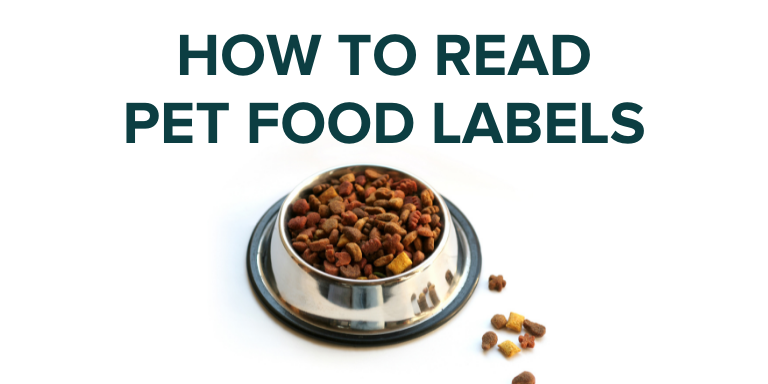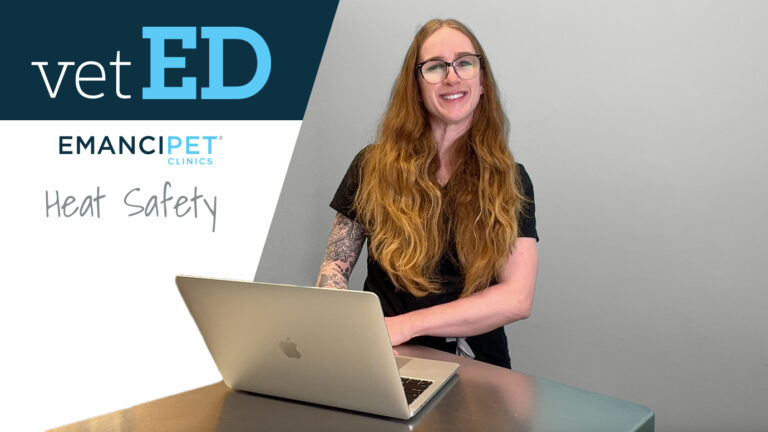When out shopping for the perfect food for your pet, you may find yourself going cross-eyed at the terms and ingredients on the labels. Not to mention the variations in pet food, such as a food that is wet, dry, semi-moist or age specific.
Really, the truth is in the wording and deciphering the good foods from the not so good can be tricky. But try not to worry! We’ve got you covered in this article as we’re going over the tips and tricks to reading and understanding pet food labels.
The Dog Food Label Format
First off, most dog food companies have a standard format of listed items as well as the way they label things.
Typically all labels will include the following:
- Product, brand name and the unique identifier
- Quantity, such as weight, liquid measurements, the count or the formulation of the food
- The guaranteed analysis, which specifies the amount of ingredients
- The ingredients in descending order (by weight)
- Nutritional adequacy statement; testing backed up by AAFCO that says the food provides a certain level of nutrients. Should also include the intended life stage.
- Feeding directions
- Manufacturers name and address
- Calorie statement
FDA and AAFCO
All dog foods should be tested and guaranteed of their nutritional adequacy by both the FDA (Food and Drug Administration) and AAFCO (Association of Animal Feed Control Officials).
Having the backing of these government agencies is crucial when looking for a food to give your dog, however, it’s important to understand that most of the FDA and AAFCO’s “rules” are based on specific wording. These wording loopholes make it easy for companies to produce a food that looks good on label but isn’t necessarily a great diet for your pet.

Product Name: The 4 Rules
It’s proven that attractive packaging and better marketing techniques will play a large role in the popularity of a certain diet. Oftentimes, owners only really look for a specific ingredient, or terminology, on the bag of food. This way of shopping has led many companies to only highlight the more demanding ingredient or add a fanciful, yet unimportant word to entice owners to buy.
Essentially, pet food labels are all about the way the company words things and the percentages of the ingredients are dictated by AAFCO’s 4 main rules about product names.
- 95% rule
- 25% rule
- The “with” rule
- The flavor rule
Now, let’s get into exactly what all of this means!
The 95% Rule
This rule implies that 95% of the named ingredient such as “chicken for dogs” or “salmon for cats” must include at least 95% of that ingredient in the product’s total weight. When adding the water that is used in the diet, the named ingredient must be no less than 70% of the food’s total weight.
If the product has two different proteins on the bag, the first ingredient named must be the one that respectively weighs the most. The remaining 5% of the diet should include the vitamins, minerals, nutrients and other minor ingredients that are provided in the food.


The 25% Rule
If you’ve noticed some of the food labels at the pet store saying “chicken dinner for dogs” or “tuna entree for cats,” these diets are using the 25% rule.
This rule implies that the named protein makes up at least 25% of the product listed, but is less than 95%. When these diets fall under that category, they must label their food with a specific qualifying word, typically being words like: dinner, entree, nuggets, platter or formula.
The weight of added fluid is also important in these foods as the named ingredient only has to be a minimum of 10% of the total weight when the water is counted, instead of 25%.
Another problem about wording is that when a diet says, “chicken dinner for dogs” it doesn’t mean that chicken is the primary protein. Because the named ingredient only has to be 25% of the total diet, it will not necessarily be the most prominent ingredient in the food.
The “With” Rule
Also known as the “3% rule,” any diet that includes the term “with” such as “Cat entree with tuna” only has to have a minimum of 3% of that named ingredient. This means that it is quite easy for owners to misread or confuse other foods such as “chicken food for cats” which would include 95% chicken and “cat entree with chicken” which only has a minor 3% instead.


The Flavor Rule
With the flavor rule, dog food companies are not required to have a specific percentage of an ingredient, only that it must be “sufficiently detected.” These rules also apply to the way that the word “flavor” is written on the label. It must be the same size, style and color as the named and labeled protein.
Essentially, only the “digest” of the protein, which are natural materials that are treated with heat, enzymes or acids in order to create a concentrated and natural flavor, must be included and no actual whole protein is in the diet.
Quantity: Weight, Count And Formulation
The net quantity is telling the consumer how much product is inside the container. This can include the liquid measurement, the weight or the count of the diet. All foods must include the quantity of their product according to the FDA.
It is crucial for owners to be checking that detail as wording such as “lite” can just mean that the kibble is puffed up with air and the canned foods can look deceivingly similar even when they are dramatically different in weight.
Guaranteed Analysis
The FDA requires that pet food labels display the minimum amount of nutrients as well as the maximum amount of moisture and crude fiber that the diet contains. They must also display the amount of crude protein, crude fat, crude fiber and water.
The diets must also support specific guarantees such as “low-fat,” “grain-free” or if they include vitamins or mineral supplements.

Ingredient List
The ingredient list is the most important thing for owners to be reading when looking for a pet food. AAFCO has some strict rules regarding the ingredients:
- The ingredients must be listed in descending order by weight
- Each ingredient must be listed individually
- Terms that describe collective ingredients, such as “animal protein products” is not allowed
- Ingredients must be listed by their common or usual name
An important note to mention is that “animal by-products” are not necessarily bad, but many owners are under the impression that it is something to avoid with pet food. On the contrary, by-products include parts of the body such as liver, heart, bones and other tissue and organs that are rich in healthy nutrients that our pets enjoy eating.
Owners should avoid feeding “grain free” diets or any diets containing a large amount of legumes (chickpeas, lentils, etc.) as these diets are increasingly associated with developing certain types of heart failure at young ages.
Nutritional Adequacy Statement
The nutritional adequacy statement helps to identify the stage of life that the diet is meant for, which could be gestation/lactation, growth, maintenance and all life stages, according to AAFCO. Many consumers don’t realize that when a diet touts the claim of “balanced and complete” it really only means that the company has met specific FDA and AAFCO standards and that the diet is approved for all life stages of an adult dog or cat.
Feeding Directions
The feeding directions are a general guideline and your pet’s breed, temperament, environment and spay/neuter status will affect how much your pet will need to eat.
Typically, the directions are labeled under the recommended measured amount of food per cup, based on your pet’s current or ideal weight.
If you are unsure of how much to feed, feel free to reach out to your vet for their advice.

Calorie Count
The number of calories in a product is roughly related to the amount of fat that is present in the diet. However, the amount of components that don’t have calories such as fiber or water can sometimes throw these numbers off.
Calorie statements must be shown as “kilocalories (KCals) per kilogram.” Kilocalories are the same as calories.
Other Label Claims
Another quick bit of pet food label terminology to look out for is when brands have statements such as “premium” or even “natural.” When companies claim that their diet is “premium” in any way, they are the same as any regular food and are not held to any kind of higher standard of formula or design. Essentially they throw some more fancy words around that have no meaning, hoping that consumers will buy them.
The term “natural” just implies that no artificial flavors or preservatives were used in their diets. But really, it is extremely rare for companies to use artificial flavors in the first place. These diets must also be free of dyes.
When pet food companies use the word “organic” that is only referring to the way that the vegetables or proteins in the diet were grown or raised. There is currently no government regulation on the labeling of organic ingredients in pet foods.

Conclusion: Understanding Your Pet Food Label
The label on a bag of pet food contains important and vital information about what you’re feeding your dog or cat. But, you just have to know how to read it! By keeping yourself well-informed and free of the negative marketing influence that comes with food manufacturers, you will be a savvy and more educated pet owner and label interpreter for the future.
Before you go – If you enjoyed this post, you probably love pets as much as we do! Did you know that you can sponsor a pet in need each month with a Nose to Tail Team donation and receive a limited-edition tote bag? Join our Nose to Tail Team and help a pet family get the care they need each month for just $0.54 a day.






